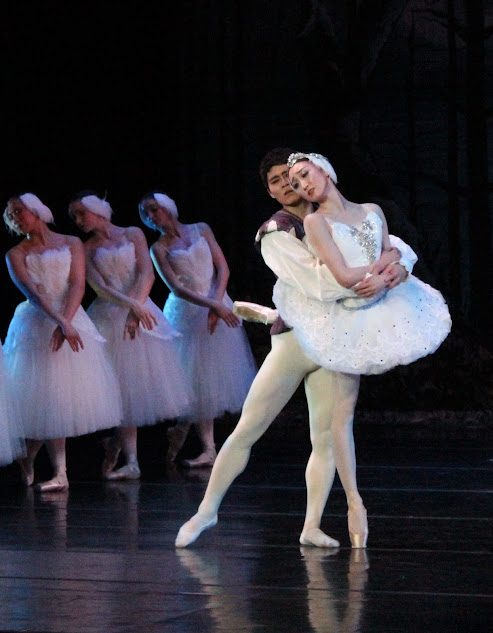First Steps: My Foray into Ballet - And Yours
Writing about Movement
Hello, and welcome to the first installment of the Kinetic Conversations Blog. If you are reading this, you might have heard our podcast, Kinetic Conversations with the Fort Wayne Ballet, which we started in 2018. In it, we explore our ballet company’s performances and the history behind those works, and interview noted guests and members of the company.
My name is John Dawkins and I am the podcast’s producer and editor. That’s right, I’m not an expert in ballet or any form of dance; I am an audio engineer. Please don’t let that be an immediate deterrent to reading! Stick with me for a moment, because we’re trying something just a little different with this blog.
You see, I want to write for the people who come to the ballet the way I did, four years ago – with no knowledge or preconceptions, no nose in the air, and with the honest intention to broaden my horizons.
All this said, I am not a stranger to the arts. I have been on the periphery of musical theater my whole life. I’m a percussionist. I have an immense love for orchestral music, and I studied music in college. I have taken
classes on orchestration and composition, and some of it even stuck. But before I was asked to produce a ballet podcast, I knew very little about the world of dance.
Therefore, armed with much interest and very few preconceived notions, I dipped my toe in and listened as we recorded. I listened to the historical recounting of famous ballets. I heard stories of famous contemporary choreographers from the dancers and repetiteurs who knew them best. And most importantly, I began attending performances.
And I fell in love with ballet.
I fell in love with the art of non-verbal expression. I marveled at music in a visual form. I thoroughly enjoyed the grace and beauty of human agility encapsulated within the intricacy of movement.
No one could ever mistake me for a dancer; grace is not a virtue I have ever attained. But I can write about what I see. I’m an outsider looking in, but I’m happy to research and recount the stories of others. And if I’m not an expert, I am fortunate enough to be surrounded by people who are.
Life is never boring if you’re still learning. I want to learn new things, and I want to take all of you along with me. Let’s examine some ballet history, but let’s also find out what it means to be a dancer in 2022. We can discover the terminology, talk about some stuffy old composers, and look at contemporary choreography. Above all, Let’s talk about why ballet isn’t necessarily what you think it is, and why you should give it a chance to win your heart.
But before we get to all of that, let’s find a beginning. Where exactly did ballet come from?
Ballet's Beginnings
Well, delving back into the footnotes of history, we find the first steps of formal dance in the Italian renaissance. The word “ballet’ even stems from the Italian ballare, which means to dance. In the early 16thcentury, ballet was an extravagance, performed by the nobility. In lavish parties, dances were performed in elaborate costumes with ever more complex movements as the trend progressed.
It was Catherine de Medici who is credited with bringing the ballet to France when she married Henry II, and the art form quickly became embedded in the French court. The dancing evolved into the next century, and in the court of Louis XIV, who was an avid dancer himself, it became practice for professional dancers to entertain after the nobles had exhausted themselves. It was also during this period that King Louis, apparently being the country’s leading proponent of this pirouetting pastime, founded the Académie Royale de Danseand began the ballet at the Paris Opera in 1661. Much of the terminology used in ballet comes from this developmental period of French dance.
By the 19th and early 20th centuries, ballet popularity in France had declined, yet had blossomed in Denmark and Russia. In particular, Russia ushered in the golden age of ballet with the works of renowned romantic composers like Tchaikovsky and Prokofiev, and choreographers like Marius Petipa.
Ballet popularity in the United States came to be in the mid 1900’s, thanks in no small part to the efforts of George Balanchine, who founded the New York Ballet. With a broad appeal for such works as The Nutcracker and Swan Lake, ballet had truly found its way to common audiences, and was ushered into the modern age. Modern ballet blossomed out of New York and across the American continent, inspiring the dreams of generations of youngsters to be the ballerinas of tomorrow.
And so, here we stand in the modern age of dance, propped up on the shoulders of great names like Robert Joffrey, Gerald Arpino, Rudolf Nureyev, Margot Fonteyn, Balanchine, Baryshnikov, Natalia Markova, Diaghilev, and many others. And from them, stories and history and memories ricochet through into the modern world of dance with a kinetic energy akin to the dances that they, and we, love. From this, we coin the phrase Kinetic Conversations.
Will you join me on my journey to understand this beautiful artform? I’m looking forward to exploring this world and passing it on to you. Please check out our podcast as well. Kinetic Conversations with the Fort Wayne Ballet is available for streaming on all platforms and can be found at fortwayneballet.org.
This blog will likely be a monthly endeavor, but our second installment will drop next week to coincide with our performance of Dracula. Please keep reading!
You can find the Kinetic Conversations with the Fort Wayne Ballet podcast here:







Comments
Post a Comment